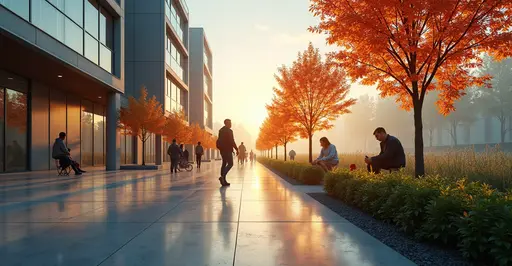
How Cities Are Cooling Down with IoT Technology
As heat waves intensify globally, cities are deploying smart sensor networks to combat dangerous Urban Heat Islands (UHIs). These hotspots – where temperatures soar 1-7°C higher than surrounding areas – pose serious health risks and strain energy resources. Real-time data now enables targeted cooling interventions during extreme heat events.
The Science Behind Urban Heat Islands
Urban areas become heat traps due to heat-absorbing concrete, reduced vegetation, and waste heat from buildings and vehicles. According to EPA research, cities like Baltimore can be 5°F hotter than nearby rural zones. This effect peaks at night when buildings release stored heat.
Smart City Solutions in Action
Cities worldwide are implementing innovative approaches:
- Los Angeles coated 20,000 roofs with reflective paint, reducing surface temps by 10°F
- Cagliari, Italy installed 500+ LoRaWAN sensors to monitor microclimates
- Rotterdam plans 10 million sq ft of green rooftops
- Medellín's "green corridors" lowered temperatures by 5.5°F
MIT's City Scanner project attaches thermal sensors to garbage trucks, creating real-time heat maps of Cambridge neighborhoods.
How Sensor Networks Work
IoT devices track critical metrics:
- Surface temperatures (infrared sensors)
- Air temperature/humidity
- CO2 levels
- Wind patterns
- Solar radiation
This data flows to central dashboards like Cagliari's Smart City Platform, enabling officials to deploy cooling measures precisely when and where needed.
Life-Saving Interventions
During heat emergencies, cities use sensor data to:
- Activate cooling centers in hottest zones
- Mist streets with evaporative cooling
- Adjust public transit routes
- Issue targeted health alerts
- Temporarily restrict energy-intensive activities
"The SenseCAP suite enables us to respond to heat islands within minutes," says Marco Uras of WiData, which deployed sensors across Cagliari.
The Road Ahead
With 70% of humanity projected to live in cities by 2050, UHI mitigation becomes critical. Emerging solutions include:
- Phase-change materials in pavement
- AI-powered heat prediction models
- Solar-reflective "cool concrete"
- Autonomous irrigation for urban green spaces
As London's Queen Elizabeth Olympic Park demonstrates, combining sensors with renewable energy creates sustainable urban oases even during extreme heat.

 Nederlands
Nederlands
 English
English
 French
French
 Deutsch
Deutsch
 Espaniol
Espaniol
 Portugese
Portugese



